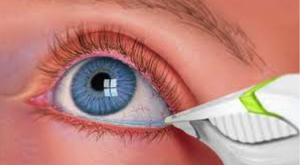From chronic dryness to low humidity in the winter months, there are many causes of dry eyes. While most people know how to deal with dry skin, there are many people who are unsure of what to do about their dry eyes. Between ten to fifteen percent of people in the United States have had problems with dry eyes, so it is important to take a few minutes to know what to do if you find yourself suffering from them.
Many different factors can cause dry eyes, and knowing which one affects you can make it easier to treat. The amount of tears your eyes produce depends of whether the eye is at rest or under stress, for example from eyestrain that stems from reading. Some people cite causes of dry eyes as being wind, dry environments or side effects of a medication.
What are the symptoms of dry eyes?
People with severely dry eye eyes usually complain of symptoms including pain, redness and decreased vision. For people with less severe cases, symptoms may include itchiness and pain. Since the symptoms are relatively general, it is important to see your eye care physician to rule out other, more serious complications.
Tear Lab: New Diagnosis in Dry Eye
Only an eye doctor can determine if you have Dry Eye Disease. At OCLI, the new TearLab® Osmolarity Test gives us information about the salt content of your tears, which is an indicator of Dry Eye Disease.
Tear osmolarity has been shown to have the best predictive value for diagnosing Dry Eye Disease of any single test. TearLab’s sophisticated lab on a chip technology tests a tiny tear sample to measure Osmolarity, or the salt content in the tears. We will test both eyes, and will take the highest number of the two tests, to generate Your Osmolarity Number. Your Osmolarity Number gives us a meaningful measure of the health and stability of the protective tear film that covers the surface of your eyes. The number generated correlates with the severity of the disease and can also be a great indicator of response to treatment modalities. What’s Your Number?
How to treat dry eyes?
No matter what the cause, many doctors recommend to wear sunglasses to protect the eyes from external triggers such as wind and bright lights. During the wintertime, many homes, office and indoor facilities have dry heating systems, a major cause of dryness in the air. Although you can’t control the air in public places, it may be worth the investment to purchase a humidifier for your home. It will add moisture into the air, helping to reduce symptoms of dry eyes. Another solution is to use artificial tears four or more times per day, or as needed.
How do artificial tears differ from eye drops?
Eye drops and artificial tears are a common confusion among many people searching for dry eye solutions. Artificial tears are meant to provide moisture whereas most eye drops are only meant to remove redness from the eyes. While they serve different purposes, artificial tears can be just as easy to find as regular eye drops. There are many over-the-counter brands that can be with or without preservatives. It is important for each patient to go through a process of trial and error to find the right brand of artificial tears for them.
Moderate dry eyes caused from winter weather should be easily resolved with one of the solutions mentioned above such as a humidifier. If not, you should consider having your eye care physician perform an eye exam to ensure dry eyes are causing your symptoms and to discuss other possible treatment options.
If you are looking for a New Jersey eye doctor, contact OCLI today to make an appointment with Dr. Silverman or one of the other eye specialists in the office. We are committed to finding the best solution for your eyes, whether they are marred by dryness or another problem!
